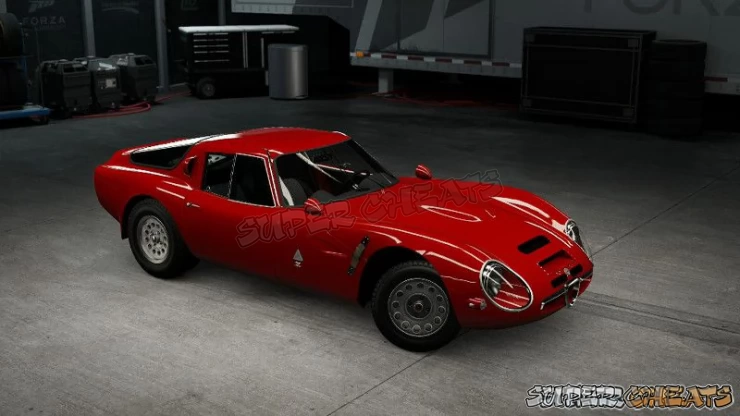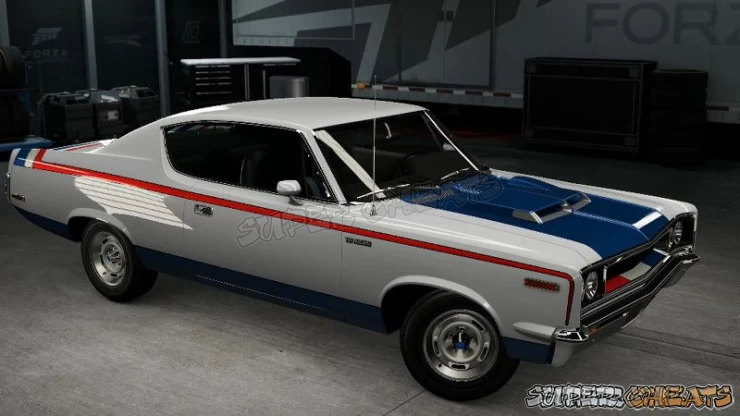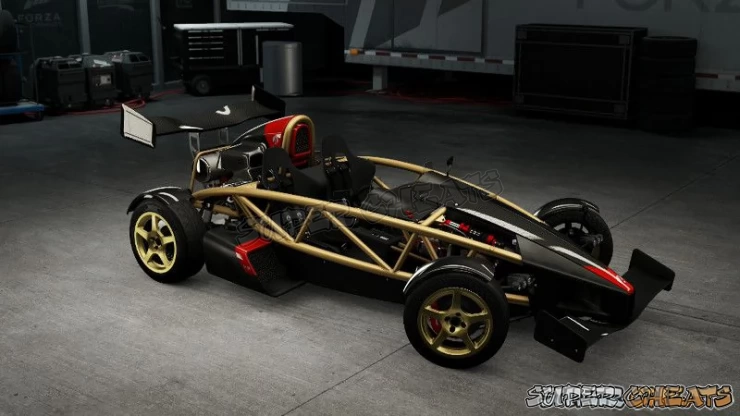The Racing Simulation War
When the original Forza Motorsport arrived on the games scene during the 2005/2006 gaming season, it was widely perceived by the established racing simulation community as little more than a publicity stunt on behalf of Microsoft, and its aging video games console, the Xbox, which while battling head-to-head against Sony's well established PlayStation platform was thought to be losing the war.
Unaware that Microsoft was preparing to launch a social gaming network parallel to its second-generation games console, the upcoming Xbox 360, or that the release of Forza Motorsport actually played a far more significant role in both the next gen games console, gaming social media, and Microsoft's intentions of splintering the racing simulation community so that it could carve off its fair share of that market, Sony ended up being blindsided by the opening salvos of a war it did not realize it was fighting until it was already well-advanced.
The prevailing theory at the time in the PlayStation camp was that Microsoft was desperate to establish the relevance of its aging games console - the original Xbox - whose basic presence was so similar to that of the PlayStation 2 with the exception of its desktop environment, that it was not taken seriously as an ongoing threat. After all, emulation is a form of flattery, right? It also suggests that the platform being paid homage to is clearly the superior one. Or so it seemed.
The arrival of the direct sequel -- Forza Motorsport 2 -- caught the GT racing community by surprise for a number of reasons, and not the least being that they really seemed to think that the original Forza Motorsport was a flash-in-the-pan.
Perceived widely by the PlayStation community as a single failed effort on Microsoft's part to carve out a piece of the lucrative racing simulation games market, the GT racers thought that the attempt had basically failed, and that was the last that they would be seeing of this Forza thingy...
It would have been a failure if a sequel had never been green-lit - but it was - and that made all the difference in the world. Because not only did Turn 10 come right back at Sony with a wild punch, it proceeded to go right for the jugular in its next attack, with the cheerful assistance of parent publisher Microsoft using its well-honed PR skills to quite literally hit back at Sony from pretty much every direction at once.
The attack that was FM2 consisted of a mixture of the subtle and the not so subtle.

In the former category the game's existence served as the first blow of the renewed attack, because the creation of this sequel not only changed the nature of the genre by affirming that competition did indeed exist, it brought the fight on an all-new platform (the Xbox 360) and it did so with a fully-engaged social media campaign that leveraged a number of technological outlets.
In the latter category was quite literally the creation of a television show to promote and celebrate racing - and the Forza games.
Prior to the game's release, Microsoft launched Forza Motorsport Showdown, a four-part TV miniseries on the Speed Network. The show, produced by Bud Brutsman and hosted by Lee Reherman, is thought to have done more to expand the Forza community than any other single PR effort.
While the Xbox LIVE community was clearly maturing with the launch of the 360, both developer Turn 10 and publisher Microsoft made very shrewd use of the combination of Xbox LIVE and the well-established social media platforms online to paint a very successful David vs. Goliath narrative.
The hidden bomb in that battle was the fact that the LIVE platform was not so much embedded into the game with the intensity and complete coverage that would soon become part of the FM hallmark, but rather it was that the game itself was more or less embedded into the new console!
That was an approach Sony did not anticipate, and it is unlikely that they could have understood the nature of the threat that this approach presented anyway, largely because Sony was at this point fully immersed in the creation and promotion of its own social gaming community on the PlayStation platforms - its PlayStation Network (PSN), and was more concerned with catching up to and then overtaking Microsoft than was quite entirely right.

When journalist Jesse Kornbluth wrote his 1986 best-seller The Other Guy Blinked: How Pepsi Won the Cola Wars his basic premise was a little-known Strategy that was increasingly popular on the corporate battlefield that was loosely based upon the philosophy of war and tactics set out in another, far older, best-selling book called The Art of War, which may - or may not - have been written by high-ranking military general, strategist and tactician Sun Tzu around the time that Jesus Christ was building his following.
That phenomenon cost Coca Cola and allowed PepsiCo to win what was being called "The Cola War," and Sony was making the same mistake in what was increasingly being referred to as the Second Console War.
Before the real danger of that situation could manifest, Microsoft proceeded to engage in a well-orchestrated series of PR triumphs that closely resembled the sort of gorilla warfare that General Sun Tzu would have quickly recognized had he been in strategic control of the situation at Sony.
With that noted, here is what happened that ultimately caused Sony to lose the Second Console War and every single one of the Racing Simulation Battles that were part of it:
FM2 offered the Xbox racing community some seriously improved racing, starting with better refined race structure that included the removal of point-to-point races from the sequel when they realized that it was the traditional circuit racing that was the major draw for players.
Meeting player interest, Turn 10 prominently featured cars from the American Le Mans Series in both the game and downloadable content, and seriously expanded its efforts to make technically faithful interpretations of the real-world licensed tracks and circuits that feature in the game.
The physics of racing - from car performance, driving “feel,” and damage - became the focus of much effort in the new game.
FM2 featured 349 cars (including downloadable content) divided into six production classes and four race classes.

Microsoft leveraged social media to the hilt, demonstrating how you get lots of free publicity and PR from that medium by using what were essentially unpaid volunteers and fans from high schools and universities who were very active on the emerging and expanding Facebook platform.
These contributors helped to promote unofficial Forza events throughout its expanded network, which at that point included the USA as well as the UK, Ireland, Canada, Australia, and New Zealand.
The World Wide Web was integrated into the game in the form of live score and leaderboards.
Paid PR staff essentially monopolized emerging social media sites, including YouTube, MySpace, and Twitter, to name a few.
The Microsoft Xbox 360 Wireless Racing Wheel was developed in alongside Forza Motorsport 2 and is designed to work with the game. Microsoft consulted professional racers to test and guide them in fine-Tuning the racing wheel performance and characteristics.
An aggressive DLC program was created and supported from within Turn 10 and Microsoft, and Turn 10 introduced the concept of “Unicorn” cars, which immediately caught fire in the racing community!
The launch of FM2 also inaugurated an ongoing game balancing and technological improvements program for the series that is still active and effective today.
Perhaps the most important element of Forza Motorsport's dominance of the console racing genre was its very aggressive two-year game cycle.
When the GT series was first developed, its first three titles were produced on a two-year schedule, which may have been how Turn 10 and Microsoft arrived at the conclusion that Forza needed to do tha tin order to remain competitive.

What Microsoft could not see or predict was the overall destruction that its war with Sony was creating inside the Sony game development system. Sony's video game development and publishing zaibatsu was shuddering under the pressure that Microsoft had brought to bear on it, so that while from the outside it looked as firm and sound as it ever had, on the inside it was increasingly being run from a position of fear.
The result of Microsoft's concealed success allowed events to transpire that, had Microsoft not so heavily and effectively engaged Sony as it did, would never have been permitted to come to fruition.
Examples include Nintendo's dominance of the collection and action-adventure combat genres via its Pokemon and the highly lucrative fantasy genres. Another example was the effectiveness that game developer and publisher Square Enix had in forcing Sony to accept dictated terms that, under other circumstances, it would not have!
In particular the success that Square had in forcing Sony to underwrite the significant expense that was involved in bringing its MMORPG Final Fantasy XI onto the PlayStation 2 platform, and specifically paying part of the costs of including the Ethernet add-on and hard drive that was packaged with the game retail box.
This was all hindsight, but in the end the combination of pressure on different genres, and its success in wooing game projects from independent studios that would ordinarily have ended up taking their games to Sony helped to push Microsoft's lean in the industry past the breaking point for Sony, and eventually won Microsoft roughly half of the 80% share of the market that Sony had taken previously.
Ultimately and, in the end, the reaction of the PlayStation community has been very similar to that of the southern United States following its Civil War. The citizens of the southern states still express the sentiment and belief that "The South will Rise Again" and the PlayStation community still seems to believe that all it really needs are a few killer platform exclusive games to put Sony back in control of the market.
When the numbers are examined, and history consulted, it seems pretty obvious that neither of those events are ever likely to happen. And certainly not with respect to the racing simulation genre, which Microsoft has fully dominated.
The Detroit Auto Show MysteryPrevious Page
Comparing FM6 to Previous Series Titles
Anything missing from this guide?
ASK A QUESTION for Forza Motorsport 6
Comments for The Racing Simulation War
Add a comment
Please log in above or sign up for free to post comments- Introduction
- Comparing FM6 to Previous Series Titles
- The Racing Simulation War
- The Detroit Auto Show Mystery
- Boosting for Affinity & Wealth
- Achievements
- Hints, Tips, and Lessons
- Walkthrough
- Reference
 Join us on Discord
Join us on Discord
